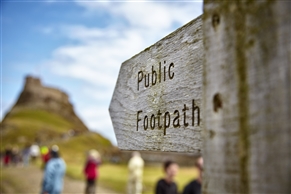Healthy food for children: What under-fives should be eating at nursery
Ensuring children eat well in their early years is key to them achieving their potential, helps prevent them becoming overweight, and reduces their risk of serious diseases in later life.
And as many young children spend a lot of time in childcare or nursery while their parents work, what they eat there is crucial.
That's why Action for Children is running the Eat Better Start Better campaign, which gives guidance to people who care for under-fives on what our little ones should be eating to give them the best start in life.
Why is good nutrition so important for the under-fives?
Eating the correct balance of foods ensures young children get the nutrients they need to grow rapidly and ensures they don't consume too much, which may lead to weight gain. Encouraging them to eat a wide variety of foods will also help them develop good dietary habits for life.
It's vital that more children eat well, as more than a fifth of children are currently either overweight or obese by the time they start primary school. In addition, the dental health of many young children is poor, and more than a quarter of young children in the UK may be at risk of iron deficiency, which is linked to slower intellectual development and poor behaviour in the long-term.
What is a healthy balanced diet for young children?
In recent years, changes in children's diets have affected their nutrient intakes with some children eating foods that are low in energy, iron and vitamin A, and high in saturated fat, sugar and salt. The Eat Better Start Better guide gives information on how to limit the bad stuff, and serve the correct portion sizes for young children.
A healthy balanced diet for children aged one to four is based on these four food groups:
- Potatoes, bread, rice, pasta and other starchy carbohydrates
- Fruit and vegetables
- Beans, pulses, fish, eggs, meat and other proteins
- Dairy and alternatives
Eat Better Start Better stresses that one of the basic principles of healthy eating is variety, as eating a wider range of foods provides a better balance of nutrients. Meals and snacks should be planned to include a variety of food and drinks from the four food groups.
How does a healthy diet for the under-5s differ from older children's diets?
Young children are growing quickly and have high energy and nutrient requirements for their size. They also eat smaller amounts than older children and adults, so it's important for them to eat regular meals and snacks that contain sufficient energy and nutrients for their needs.
A low-fat, high fibre diet isn't appropriate for young children, particularly those aged under two years, as it may not provide enough energy, fat, iron or zinc, and is too high in fibre.
Between the ages of two and five years, children should gradually move towards the diet recommended for older children and adults, with less energy provided from fat, and more fibre.
How often should the under-fives eat?
It's important that the food and drink provided for children is balanced across each day, and that children eat regularly, with breakfast, lunch, tea, and two or three snacks provided daily.
Here's what nurseries and child-carers should be doing
Plan menus to include a variety of foods, tastes, textures and colours. This will give children an opportunity to try a wide range of foods.
Plan meals and and snacks to meet Eat Better Start Better food and drink guidelines, so children will meet their nutritional requirements.
Cater for the cultural and dietary needs of all children.
Introduce new menu cycles at least twice a year. This will incorporate seasonal products and give children the chance to try different foods.
Share menus for meals and snacks with parents. This can help parents balance meals and snacks with food provided at nursery.





